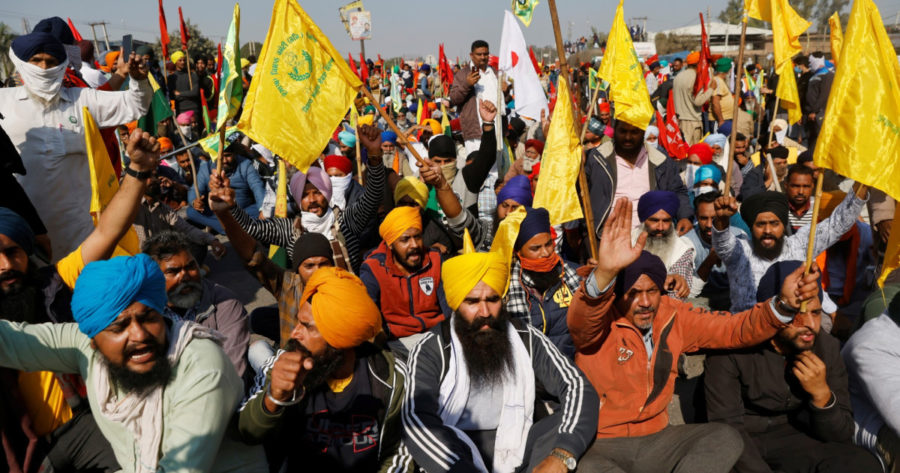Understanding the Farmers’ Protests in India
Hundreds of thousands of farmers have taken to the streets of India to protest drastic agricultural reforms that the Indian government plans to put in place. But why are they protesting, and what does this mean for the country?
More than 60% of India’s population depends on agriculture as a livelihood. Since the 1960s, Indian farmers have followed a marketing system of farmers bringing crops to wholesale markets (called “mandis”) then selling the crops to traders in an open auction. Mandis are run by a marketing board that was established by the state to stop farmers from being exploited by larger retailers. However, in September, the BJP (Bharatiya Janata Party, the same party as Prime Minister Narendhra Modi), put into place three laws that would reduce the government’s role in agriculture and open up the space for private investors. The government believes that such moves will modernize the country’s agricultural industry and greatly boost the economy, which Modi has said he wants nearly doubled by 2024.
Farmers say such reforms will be detrimental to the lives and profit that the farmers make. This move could potentially leave farmers susceptible to exploitation by private investors. Large companies could drive down prices, which would greatly hurt farmers’ income. Farmers worry that a deregulation of the agricultural section will gradually kill the mandi system, which will also mean the end of the MSP (Minimum Support Price), an agricultural product price (set by the government of India), to purchase directly from the farmer. This price is to safeguard the farmer to a minimum profit from the harvest, if the open market’s price is too low. The extinction of such a system would leave Indian farmers, an already vulnerable group, susceptible to the whims of large and capital-hungry corporations.
Protesters are demanding that Prime Minister Modi repeal these laws that have been put into place. Prime Minister Modi and the BJP, however, will not back down. Experts worry that the near-totalitarian power that the BJP exercised in passing its laws in September is detrimental to Indian stability. In September, bills were pushed by a majority BJP Parliament through without farmer consultation, and the House became a screaming match as the bill was passed with a voice vote (a vote taken by noting the relative strength and volume of calls). Additionally, the public feed of the proceedings was cut so the country couldn’t see how decisions were being made, representing a dangerous power imbalance within the country’s government.
Prime Minister Modi has consistently rejected opportunities for negotiation with disgruntled farmers, citing that his plan will boost the economy and benefit the agriculture sector in the long run. When farmers’ unions began holding protests, they were met with police in riot gear who used tear gas and water cannons to keep the protestors from reaching New Delhi. The government arrested dozens of people and charged farmers’ unions of sedition and rioting. The Internet was shut down in Delhi’s borders, and electricity and water were even cut in one farmer camp. Nine journalists who reported on the events were accused of sedition by the government, and Twitter permanently removed more than 500 accounts.
The farmer’s protests in India are not just about the rights of the agricultural sector; they also represent a pertinent and international issue of power imbalance between the government and its people. The turmoil taking place in India cannot be ignored, and we all must do our part to educate ourselves on the facts.


